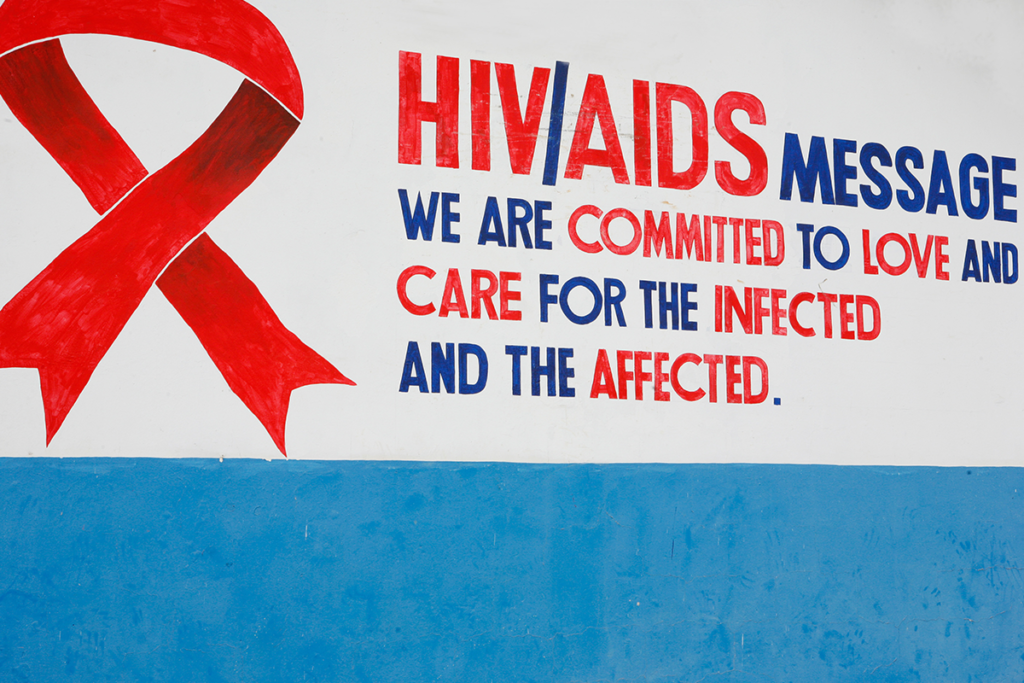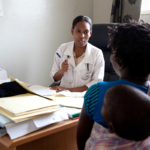The US President’s Emergency Plan for AIDS Relief (PEPFAR) is a remarkable success story built on the effective use of data. The achievements of this landmark initiative have played a central role in getting us to the point where we can finally talk about controlling the HIV epidemic and creating an AIDS-free generation.
Through 2016, $70 billion has been invested in this unprecedented disease control effort. The accomplishments to date have been extraordinary and unimaginable just a few years ago: in 2016 alone, 74 million people were tested for HIV infection; since the start of PEPFAR, 2 million babies were born HIV-free due to women receiving prevention-of-mother-to-child-HIV-transmission (PMTCT) treatment; 12 million voluntary medical male circumcisions have been performed; and PEPFAR accounted for 12 million of the 18 million people globally receiving life-extending antiretroviral therapy (ART).
How did we get to this point in the global response? PEPFAR, the largest investment ever made by any country to a single-disease control effort, contributed by transitioning from an emergency approach to one driven by real-time use of granular, site-level data to guide programmatic investments to achieve epidemic control. In view of this improved use of data, perhaps the “Emergency” in PEPFAR should now be changed to “Epidemiologic.” After all, epidemiology, the study and analysis of patterns, causes, and effects of disease conditions on populations, is the cornerstone of public health.
PEPFAR’s beginnings
When PEPFAR was launched by President George W. Bush in 2003, it was an emergency effort to address the rapidly expanding global HIV epidemic, primarily in sub-Saharan Africa. At the time, fewer than 100,000 HIV-infected people in Africa were receiving ART. There was an intense focus on achieving ambitious targets for the first 5 years: 2 million people on ART, 7 million HIV infections prevented, and 10 million people on HIV care.
Early PEPFAR efforts focused on rapid scale-up of HIV testing services and linkage to HIV care and treatment programs, in addition to HIV prevention services and care for HIV-related orphans and vulnerable children. After the first 5 years, there was a transition to approaches that could sustain long-term national programs, including health systems strengthening and health workforce development. This shift acknowledged the need to settle in for a marathon, rather than a sprint.
During this second phase of PEPFAR, the landmark HIV Prevention Trials Network’s HPTN 052 study demonstrated that treatment is prevention – HIV-infected persons on effective ART were shown to be essentially not infectious to other persons due to viral suppression. This finding galvanized the global response and led to the UNAIDS 90-90-90 strategy for HIV epidemic control: 90% of HIV-infected persons are to be diagnosed; 90% of HIV-infected persons are to be started and retained on ART; and 90% of people on ART are to be virally suppressed. PEPFAR targets have been fully aligned with this strategy.
PEPFAR 3.0
Kenya provides a striking example of redirecting resources based on data. PEPFAR data analysis, presented in the figure below, revealed that 60% of PEPFAR-supported PMTCT sites (2,903 of 4,806) identified fewer than three HIV-infected pregnant women during a 6-month period, while 100 sites identified greater than 50 such women during a similar period. PEPFAR responded by shifting resources to the areas and facilities with the highest disease burdens, resulting in increased programmatic yield.
 Much of the analysis of PEPFAR data has focused on the prevention, care and treatment cascade (link here; pictured at right). The cascade is a useful way to visualize the dynamics of the epidemic and to identify ways to target the global HIV response. PEPFAR supports implementation science efforts to learn how to improve the interventions addressing the various steps in the cascade for the diverse setting and populations around the world. PEPFAR data analysis has also helped us to identify members of at-risk and key populations who have HIV risk several fold higher than persons in the general population. This knowledge facilitates a heightened response to the HIV epidemic among adolescent girls and young women, especially in southern Africa, and key populations: men who have sex with men, transgender individuals, sex workers and people who inject drugs.
Much of the analysis of PEPFAR data has focused on the prevention, care and treatment cascade (link here; pictured at right). The cascade is a useful way to visualize the dynamics of the epidemic and to identify ways to target the global HIV response. PEPFAR supports implementation science efforts to learn how to improve the interventions addressing the various steps in the cascade for the diverse setting and populations around the world. PEPFAR data analysis has also helped us to identify members of at-risk and key populations who have HIV risk several fold higher than persons in the general population. This knowledge facilitates a heightened response to the HIV epidemic among adolescent girls and young women, especially in southern Africa, and key populations: men who have sex with men, transgender individuals, sex workers and people who inject drugs.
Expansion of PEPFAR’s epidemiologic response
When launched, PEPFAR 3.0 employed a number of existing and new data-rich mechanisms to assure accountability, transparency and programmatic impact, while making the data accessible. The result was the PEPFAR Dashboards – Using Data for Decision Making. The intent is to use real-time data to inform performance-based decision making to ensure maximal impact. As a result, PEPFAR resources have been shifted away from geographic areas with a lower burden of HIV and from facilities that contribute little to programmatic targets, to better address areas and facilities with a high burden of disease. Other resources were required to fill the gaps left behind.
Tools developed for PEPFAR 3.0 include:
- Monitoring, Evaluation and Reporting (MER) for PEPFAR programs
- Site Improvement and Monitoring System (SIMS) to measure and improve program quality
- Expenditure Analyses (EA) to optimize cost efficiency
- Population-based HIV Impact Assessments (PHIA) to measure HIV prevalence and incidence
PHIAs will be conducted in 12 countries in Africa and in Haiti from 2015 to 2018. These standardized cross-sectional HIV prevalence and incidence surveys will allow for an assessment of the impact on the most important epidemiologic parameters of epidemic control. HIV incidence is determined with the use of a serologic assay for recent HIV infection coupled with an HIV viral load assay, which is helpful in avoiding the classification of people on ART as being recently infected. These surveys are providing new insight into the key elements of the HIV treatment cascade and will help guide further investments to control the epidemic.
A new global standard for the use of real-time data to guide programmatic investments to achieve HIV epidemic control has been set. Hats off to PEPFAR for putting an evidence-based response at the top of the agenda.
Perhaps the “Emergency” in PEPFAR should be changed to “Epidemiologic”? Only through the intelligent use of data, can we gain the efficiencies necessary for ending the HIV epidemic and achieving an AIDS-free generation.
Photo caption: Zambia HIV clinic
Image credit: Jessica Scranton/FHI 360





